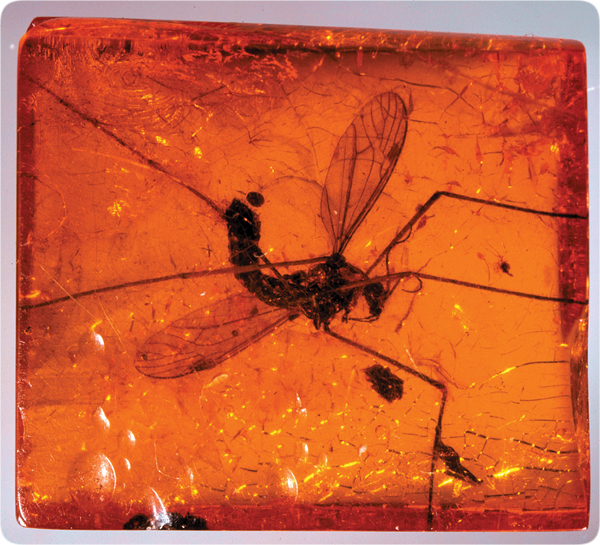Below is the online edition of In the Beginning: Compelling Evidence for Creation and the Flood,
by Dr. Walt Brown. Copyright © Center for Scientific Creation. All rights reserved.
Click here to order the hardbound 8th edition (2008) and other materials.
25. Out-of-Sequence Fossils
Frequently, fossils are not vertically sequenced in the assumed evolutionary order.a For example, in Uzbekistan, 86 consecutive hoofprints of horses were found in rocks dating back to the dinosaurs.b A leading authority on the Grand Canyon published photographs of horselike hoofprints visible in rocks that, according to the theory of evolution, predate hoofed animals by more than 100-million years.c Dinosaur and humanlike footprints were found together in Turkmenistand and Arizona.e Sometimes, land animals, flying animals, and marine animals are fossilized side-by-side in the same rock.f Dinosaur, whale, elephant, horse, and other fossils, plus crude human tools, have reportedly been found in phosphate beds in South Carolina.g Coal beds contain round, black lumps called coal balls, some of which contain flowering plants that allegedly evolved 100-million years after the coal bed was formed.h Amber, found in Illinois coal beds, contain chemical signatures showing that the amber came from flowering plants, but flowering plants supposedly evolved 170-million years after the coal formed.i In the Grand Canyon, in Venezuela, in Kashmir, and in Guyana, spores of ferns and pollen from flowering plants are found in Cambrianj rocks—rocks supposedly deposited before flowering plants evolved. Pollen has also been found in Precambriank rocks deposited before life allegedly evolved.
Petrified trees in Arizona’s Petrified Forest National Park contain fossilized nests of bees and cocoons of wasps. The petrified forests are reputedly 220-million years old, while bees (and flowering plants, which bees require) supposedly evolved almost 100-million years later.l Pollinating insects and fossil flies, with long, well-developed tubes for sucking nectar from flowers, are dated 25-million years before flowers are assumed to have evolved.m Most evolutionists and textbooks systematically ignore discoveries which conflict with the evolutionary time scale.

Figure 12: Insect in Amber. The best-preserved fossils are encased in amber, protected from air and water, and buried in the ground. Amber, a golden resin (similar to sap or pitch) usually from conifer trees, such as pines, may also contain other preservatives. Significantly, no transitional forms of life have been found in amber, despite evolutionary-based ages of 1.5 – 300 million years. (According to evolution, there should be millions.) Animal behaviors, unchanged from today, are seen in three-dimensional detail. For example, ants in amber show the same social and work patterns as ants today.
Experts bold enough to explain how these fossils formed say that hurricane-force winds must have snapped off trees at their trunks, causing huge amounts of resin to spill out and act like flypaper. Debris and small organisms were blown into the sticky resin, which was later covered by more draining resin and finally buried. (Part II of this book will show that such conditions arose as the flood began.)
In a clean-room laboratory, 30 – 40 dormant, but living, bacteria species were removed from intestines of bees encased in amber from the Dominican Republic. When cultured, the bacteria grew! [See “Old DNA, Bacteria, and Proteins?” on page 39.] This amber is claimed to be 25–40 million years old, but I suspect it formed at the beginning of the flood, only thousands of years ago. Is it more likely that bacteria can be kept alive thousands of years or many millions of years? Metabolism rates, even in dormant bacteria, are not zero.